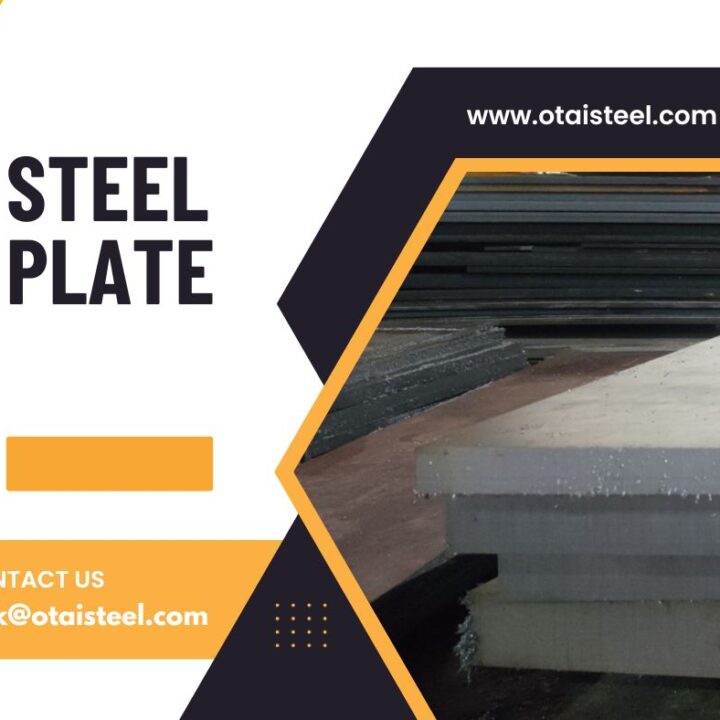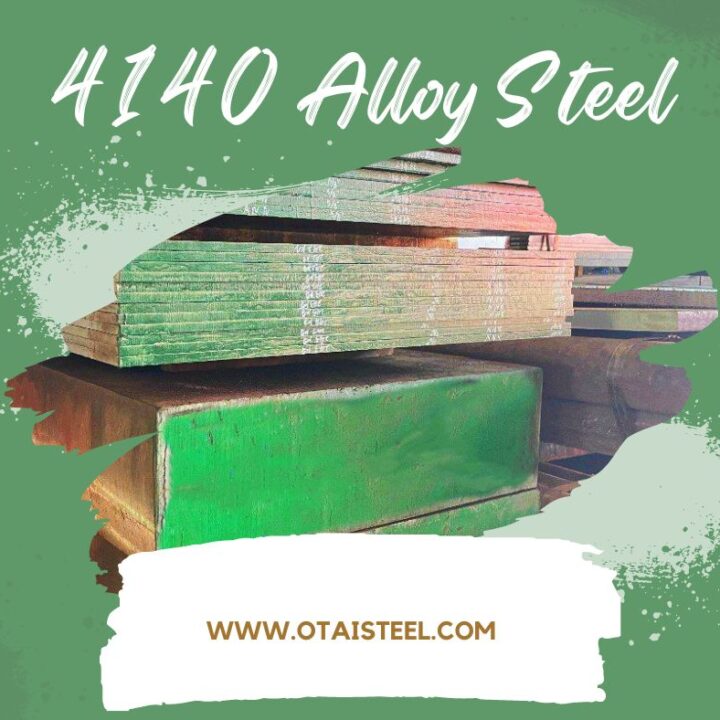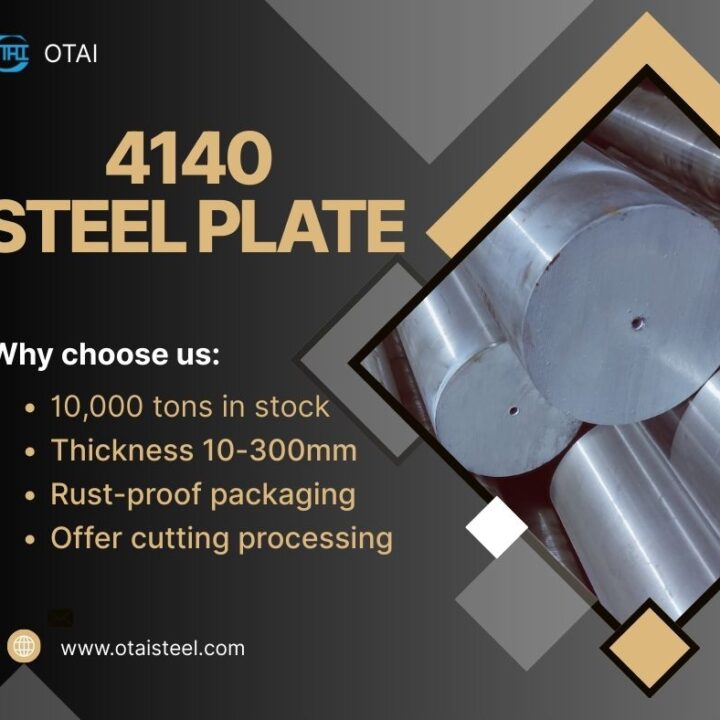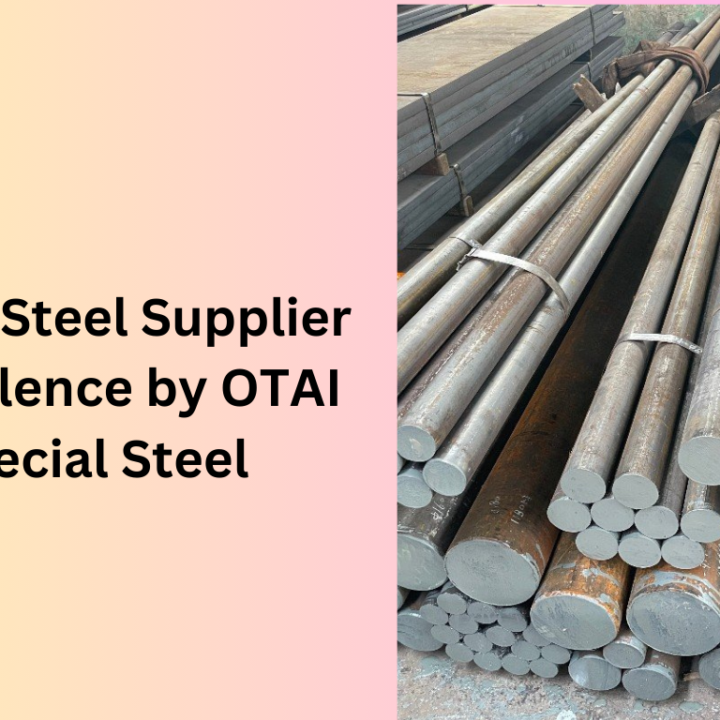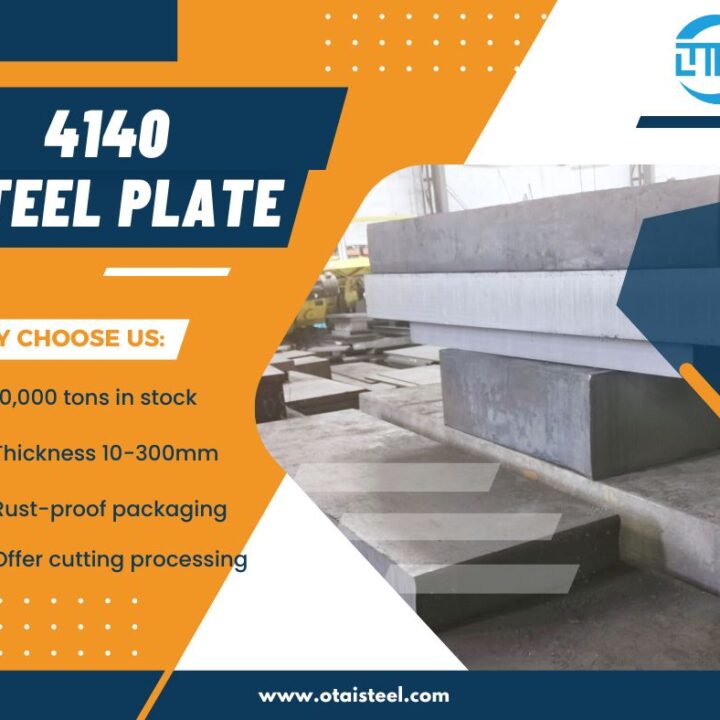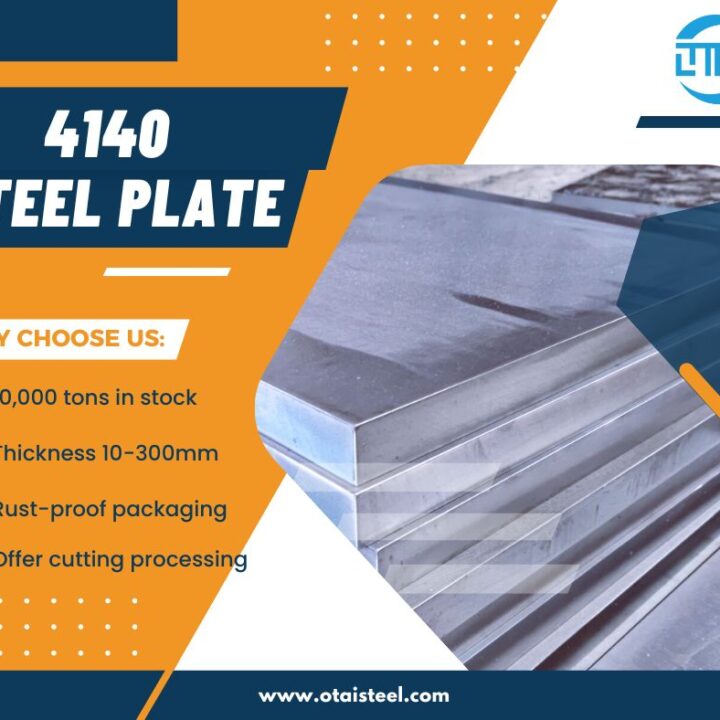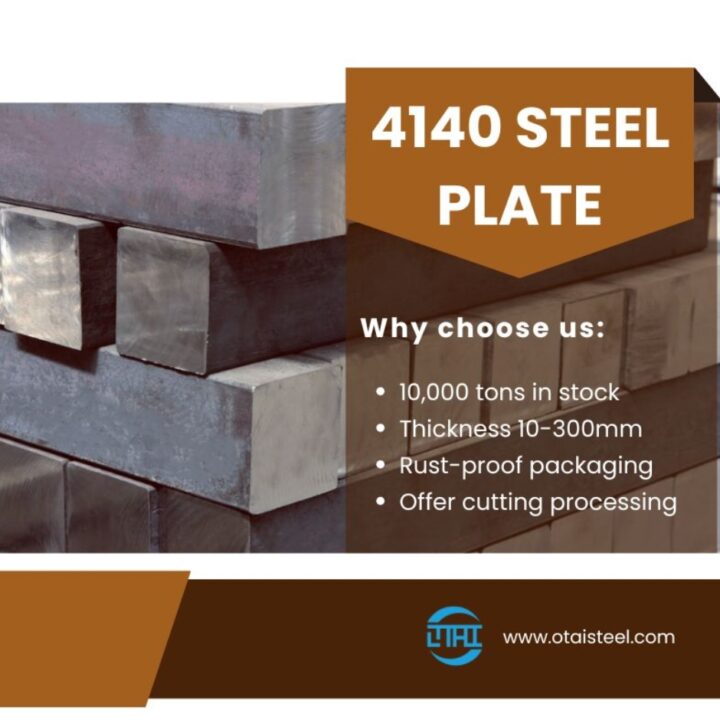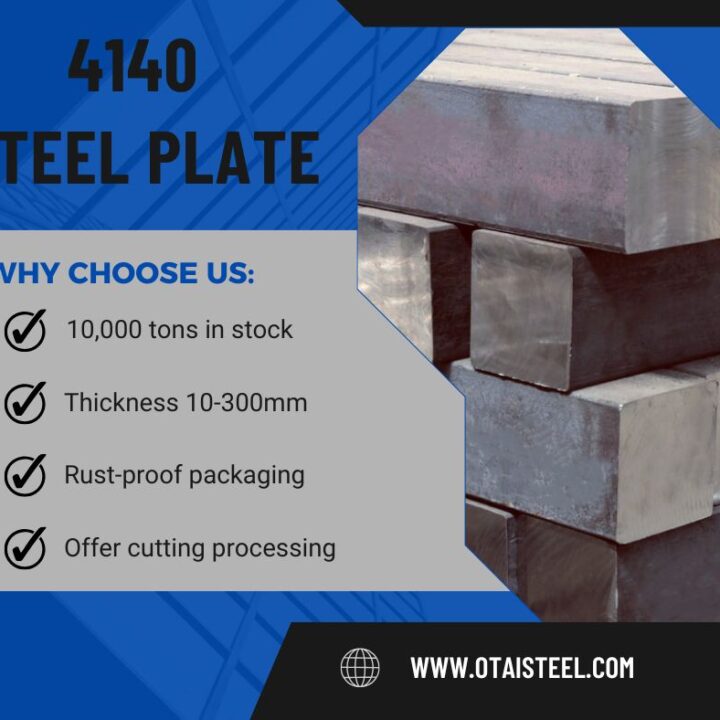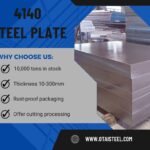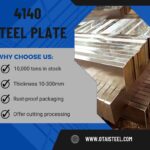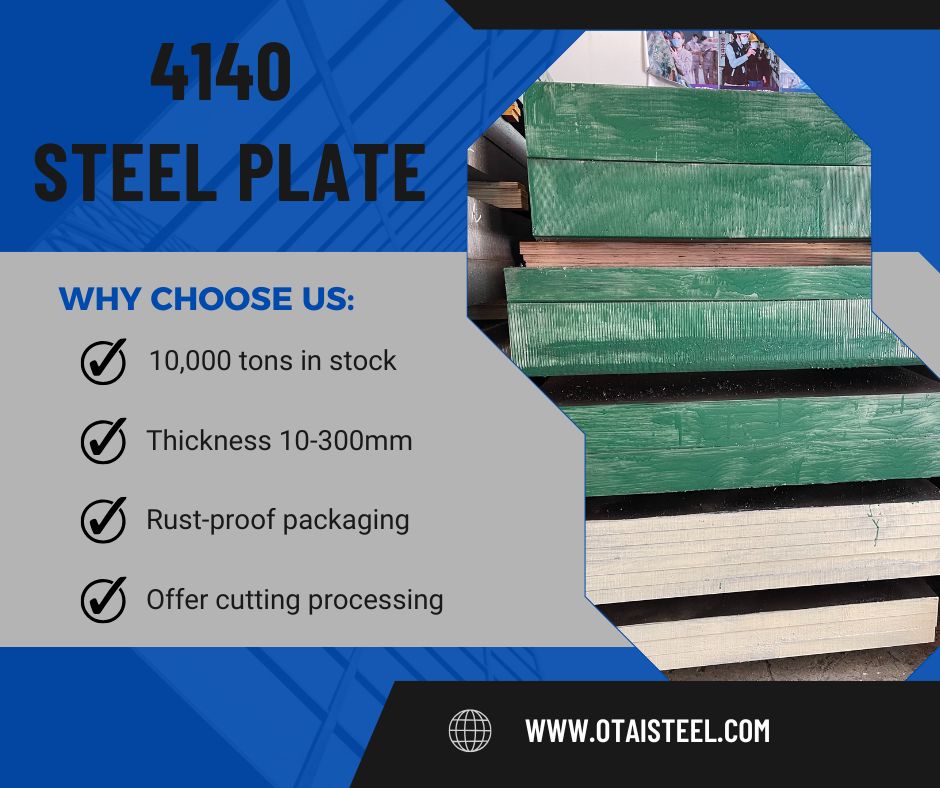 Quenched 4140 Steel Properties: Strength, Toughness & Industrial Applications
Quenched 4140 Steel Properties: Strength, Toughness & Industrial Applications
When it comes to engineering materials that balance strength, toughness, and versatility, quenched 4140 steel has earned a strong reputation across industries. Quenching is one of the most common heat treatment processes for this alloy steel, and it significantly changes its mechanical properties, making it ideal for demanding applications like gears, shafts, bolts, and high-stress machine components.
In this article, we’ll break down the mechanical properties of quenched 4140 steel, its chemical composition, advantages, and key uses. We’ll also compare its performance to other conditions like annealed and tempered states, so you can choose the right form for your project.
🌟 What Is Quenched 4140 Steel?
4140 steel leverages chromium and molybdenum to deliver high strength, hardenability, and fatigue resistance. Heat it to 850–900 °C (1560–1650 °F), then quench—oil or water flashes the microstructure into martensite, driving up hardness and yield strength. Quenching also embrittles the steel, so a follow-up tempering step re-balances toughness for peak performance.
🧪 Chemical Composition of 4140 Steel
| Element | Percentage (%) |
|---|---|
| Carbon (C) | 0.38 – 0.43 |
| Chromium (Cr) | 0.80 – 1.10 |
| Manganese (Mn) | 0.75 – 1.00 |
| Molybdenum (Mo) | 0.15 – 0.25 |
| Silicon (Si) | 0.15 – 0.35 |
| Sulfur (S) | ≤ 0.040 |
| Phosphorus (P) | ≤ 0.035 |
⚙️ Quenched 4140 Steel Mechanical Properties
The mechanical properties of quenched 4140 steel depend on the quenching medium, heating temperature, and subsequent tempering process. Here’s an overview of typical values:
| Property | Quenched (Un-Tempered) | Quenched & Tempered |
|---|---|---|
| Hardness (HRC) | 50–55 | 28–45 |
| Tensile Strength (MPa) | 1250–1450 | 850–1100 |
| Yield Strength (MPa) | 1050–1200 | 650–900 |
| Elongation (%) | 8–12 | 14–20 |
| Impact Toughness (J) | Low (Brittle) | Moderate to High |
Key takeaway: Quenching alone makes 4140 steel extremely hard but brittle. Adding tempering restores toughness while keeping high strength.
🔍 Benefits of Quenched 4140 Steel
-
High Wear Resistance – Ideal for tools, dies, and wear parts.
-
Excellent Hardenability – Uniform hardness even in thicker sections.
-
Superior Strength-to-Weight Ratio – Strong yet relatively lightweight compared to some other steels.
-
Versatility in Post-Treatment – Can be tempered or surface-hardened for specific applications.
-
Dimensional Stability – Less distortion compared to some carbon steels after heat treatment.
🏭 Applications of Quenched 4140 Steel
Quenched 4140 steel is widely used in industries like oil & gas, automotive, aerospace, and heavy machinery. Common applications include:
-
High-stress gears and shafts
-
Crankshafts in automotive engines
-
Hydraulic cylinder rods
-
Drill collars and downhole tools
-
Bolts and studs requiring high tensile strength
-
Tooling components like dies and punches
🆚 Quenched vs. Annealed vs. Tempered 4140 Steel
| Condition | Strength | Hardness | Ductility | Applications |
|---|---|---|---|---|
| Annealed | Low | Low | High | Easy machining, forming |
| Quenched | Very High | Very High | Low | Wear parts, high-strength components |
| Quenched & Tempered | High | Medium-High | Moderate-High | Gears, shafts, bolts |
Pro Tip: If your application requires both strength and toughness, quenched & tempered 4140 steel is often the best choice.
📏 Heat Treatment Parameters for Quenching 4140 Steel
-
Austenitizing Temperature: 850–900°C (1560–1650°F)
-
Quenching Medium: Oil (preferred for reducing cracking risk) or water (for maximum hardness)
-
Tempering Range: 200–650°C (390–1200°F), depending on desired hardness and toughness
🛠 Machinability and Weldability
-
Machinability: Quenched 4140 steel is difficult to machine due to its hardness. Pre-machining in the annealed state is recommended.
-
Weldability: Welding quenched 4140 steel is challenging and requires preheating, low-hydrogen electrodes, and post-weld heat treatment to avoid cracking.
🏆 Company Advantages – Otai Special Steel
-
Massive Stock – Over 10,000 tons of 4140 alloy steel in various sizes and conditions.
-
Custom Processing – Cutting, heat treatment, and precision machining available.
-
Quality Control – UT testing, chemical composition analysis, and third-party inspections (SGS, BV).
-
Global Supply – Serving leading corporations worldwide with stable supply and competitive pricing.
-
Expert Support – Technical guidance for material selection, machining, and heat treatment.
❓ FAQ
Q1: Is quenched 4140 steel brittle?
Yes, quenched 4140 steel is brittle without tempering. Adding a tempering step improves toughness.
Q2: Can quenched 4140 steel be welded?
Yes—preheat to ward off hydrogen cracking, then post-weld heat-treat to relax residual stresses and restore toughness.
Q3: What is the typical hardness of quenched 4140 steel?
Typically HRC 50–55 before tempering.
Q4: Which industries use quenched 4140 steel the most?
Oil & gas, aerospace, automotive, and heavy machinery industries.

